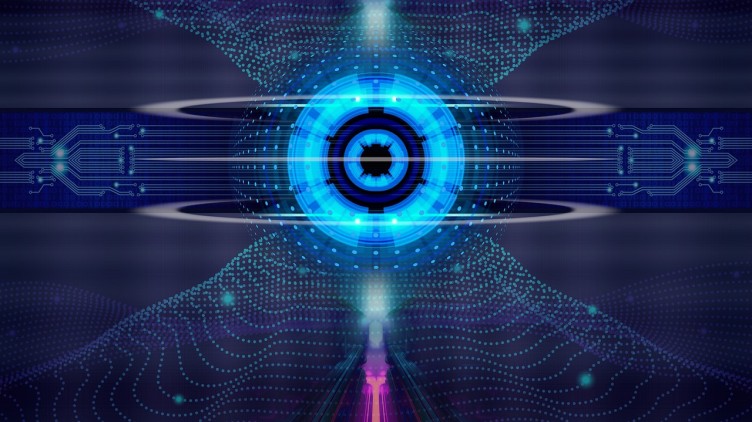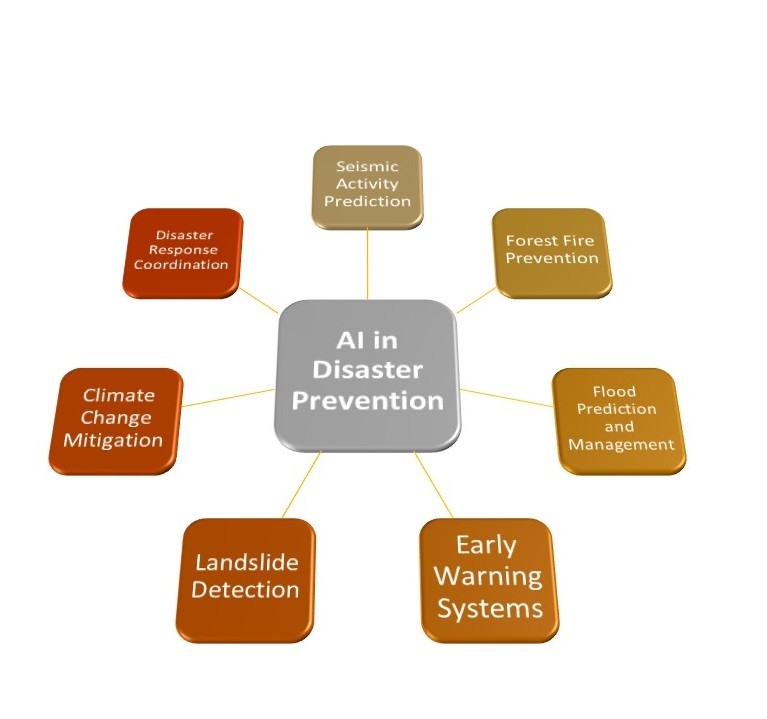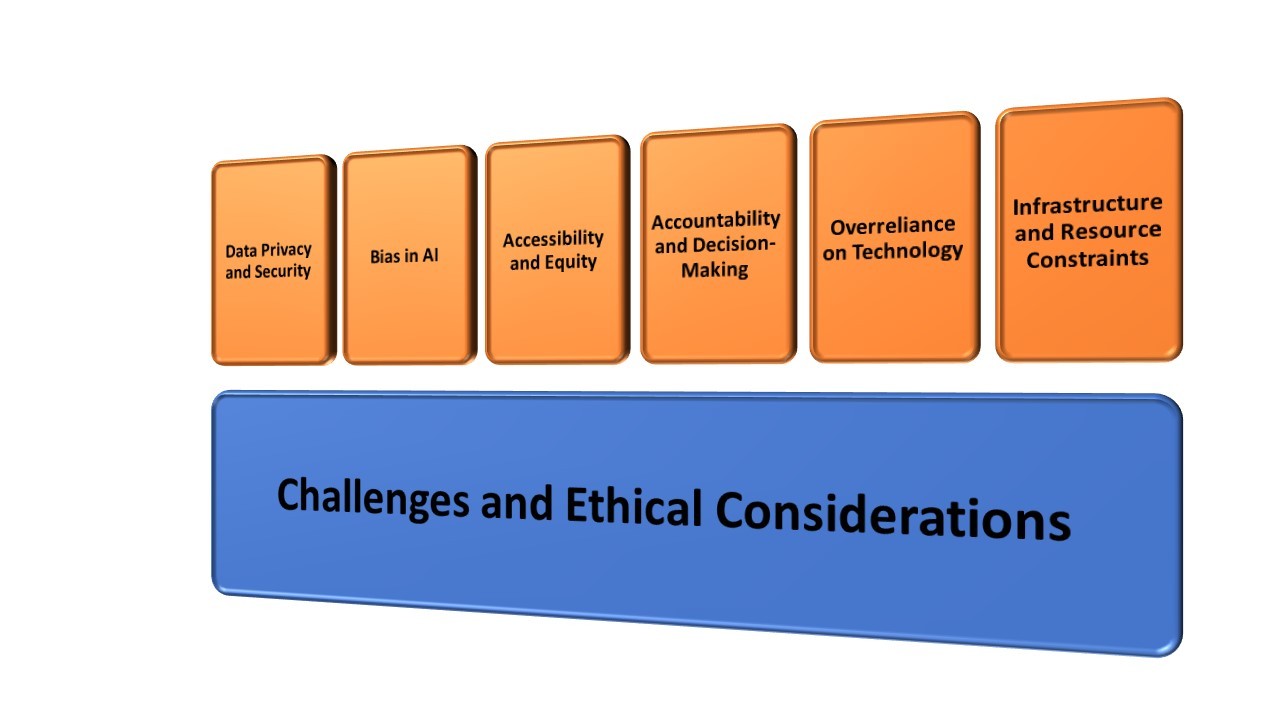Comments
- No comments found

Natural disasters, from hurricanes and earthquakes to wildfires and floods, have wreaked havoc on our planet for centuries.
These catastrophic events can lead to immeasurable loss of life and property, and they often leave communities in ruins. While we cannot fully control or predict it, we can use the power of technology and innovation to mitigate the impact of these disasters. Artificial Intelligence (AI), with its remarkable capabilities, is emerging as a potent tool in disaster prevention, early warning, and response efforts.
Before delving into the ways AI can assist in disaster prevention, it's crucial to understand the nature of these events. Natural disasters are broadly categorized into geological, meteorological, hydrological, and climatological phenomena. Earthquakes, volcanic eruptions, and tsunamis fall under geological disasters, while meteorological disasters include hurricanes, tornadoes, and blizzards. Hydrological disasters involve floods and landslides, and climatological disasters encompass droughts, heatwaves, and wildfires.
Natural disasters are inherently unpredictable, but their consequences can be mitigated through early intervention and effective preparedness. These events can have devastating economic, social, and environmental impacts. Preventing natural disasters or minimizing their damage is a global imperative. AI, with its ability to process vast amounts of data, analyze patterns, and make real-time predictions, is revolutionizing our approach to disaster prevention.

One of the most crucial aspects of disaster prevention is providing early warnings to vulnerable populations. AI-powered systems can process data from various sources, including weather sensors, satellites, and social media, to detect early signs of impending disasters. For example, in the case of hurricanes, AI algorithms can analyze atmospheric data to predict their path and intensity accurately. These predictions enable authorities to issue timely warnings and evacuate at-risk areas, saving countless lives.
Earthquakes, another devastating natural disaster, can now be better understood and predicted with AI. Machine learning models can analyze historical seismic data, monitor ground movements, and detect subtle changes in the Earth's crust to anticipate seismic events. While we may not prevent earthquakes altogether, early detection can give people precious seconds or even minutes to take cover and reduce casualties.
Wildfires have been increasing in frequency and intensity in recent years due to climate change. AI-powered systems can play a vital role in preventing these disasters. Drones equipped with AI algorithms can monitor forests for signs of potential ignition sources, such as lightning strikes or campfires. AI can also analyze weather conditions to predict the spread of fires, enabling firefighters to strategize their efforts more effectively.
Flooding is a recurring disaster that affects numerous regions worldwide. AI models can process data from rainfall gauges, river levels, and soil moisture sensors to predict when and where floods are likely to occur. Additionally, AI-driven flood modeling can help design better infrastructure and urban planning to reduce flood risk and damage.
Landslides often follow heavy rainfall or earthquakes, posing significant threats to communities located in hilly or mountainous regions. AI-based geospatial analysis can detect areas susceptible to landslides and issue early warnings. These systems rely on data from satellites, ground sensors, and historical landslide events to identify at-risk locations.
While not a direct prevention method, AI can help combat the root cause of many natural disasters: climate change. Machine learning algorithms can analyze climate data, identify trends, and develop strategies for reducing greenhouse gas emissions. AI can also optimize energy usage, promote renewable energy sources, and support sustainable land use practices.
AI can improve the coordination of disaster response efforts. Chatbots, virtual assistants, and automated systems can streamline communication between emergency responders, government agencies, and affected populations. AI can also analyze real-time data to assess the scope of a disaster and allocate resources more efficiently.
let's probe the challenges and ethical considerations associated with the use of AI in disaster prevention. While AI has the potential to greatly improve our preparedness and response to natural disasters, it also brings forth several complex issues that need careful attention.

AI relies heavily on data, and disaster prevention systems are no exception. Gathering data from various sources, including personal devices and sensors, is essential for predictive models. However, this raises concerns about data privacy and security.
o Privacy: When collecting data from individuals, it is crucial to ensure that their privacy is protected. AI models must be designed to anonymize and aggregate data to prevent the identification of individuals. Transparent data usage policies and informed consent are vital.
o Security: With the increased reliance on data for disaster prediction, there is a heightened risk of cyberattacks. Protecting the data and systems from malicious actors is a critical concern, as an attack on these systems could result in false warnings or other misinformation that could be disastrous.
AI algorithms can inadvertently inherit biases from the data they are trained on. In disaster prevention, bias could result in inaccurate predictions or unfair prioritization of resources. For example, if historical data is biased towards certain demographics or regions, the AI model might not provide equal protection to all.
Addressing bias in AI requires careful data selection and preprocessing, as well as ongoing monitoring and adjustment of the models. Ethical guidelines for AI development should include measures to identify and mitigate bias.
It's crucial to ensure that AI-driven disaster prevention tools are accessible to all, regardless of socioeconomic status or geographic location. Historically disadvantaged communities may have limited access to technology and resources, making them more vulnerable to natural disasters.
Achieving equity involves not only providing access to AI tools but also addressing the underlying disparities in resources, infrastructure, and education that can exacerbate the impact of disasters on marginalized communities.
As AI systems become more integrated into disaster prevention, it becomes essential to establish clear lines of accountability. When an AI system provides predictions or recommendations, it should be transparent about how it arrived at those conclusions.
Additionally, there should be mechanisms in place to challenge or appeal AI-driven decisions. In cases where human lives and safety are at stake, it's crucial to have oversight and accountability structures that ensure responsible and ethical use of AI.
While AI is a powerful tool, there is a risk of overreliance on technology to predict and mitigate disasters. Human judgment and expertise should remain at the core of disaster response efforts. An overreliance on AI might lead to complacency, where humans trust the technology blindly, potentially overlooking critical factors or warning signs.
It's important to strike a balance between AI-assisted decision-making and human expertise, ensuring that AI complements, rather than replaces, the roles of emergency responders and disaster management professionals.
Implementing AI-driven disaster prevention systems requires substantial infrastructure, funding, and expertise. Many regions, especially in developing countries, may lack the necessary resources to adopt and maintain these systems effectively. This creates a technological divide in disaster preparedness and response.
International collaboration and support are needed to ensure that AI-driven disaster prevention technologies are accessible to all countries, regardless of their economic capabilities.
Artificial Intelligence is rapidly transforming our approach to disaster prevention and management. Its ability to process and analyze vast amounts of data in real time enables us to predict, prepare for, and respond to natural disasters more effectively. As we continue to develop and refine AI-powered tools and systems, we inch closer to a future where we can significantly reduce the devastating impact of these events on our communities and our planet. However, it is essential to approach AI in disaster prevention with care, addressing ethical concerns and ensuring equitable access to these lifesaving technologies. By doing so, we can harness the full potential of AI to protect ourselves and future generations from the wrath of nature.
Ahmed Banafa is an expert in new tech with appearances on ABC, NBC , CBS, FOX TV and radio stations. He served as a professor, academic advisor and coordinator at well-known American universities and colleges. His researches are featured on Forbes, MIT Technology Review, ComputerWorld and Techonomy. He published over 100 articles about the internet of things, blockchain, artificial intelligence, cloud computing and big data. His research papers are used in many patents, numerous thesis and conferences. He is also a guest speaker at international technology conferences. He is the recipient of several awards, including Distinguished Tenured Staff Award, Instructor of the year and Certificate of Honor from the City and County of San Francisco. Ahmed studied cyber security at Harvard University. He is the author of the book: Secure and Smart Internet of Things Using Blockchain and AI.
Leave your comments
Post comment as a guest